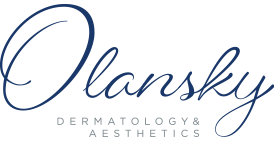Getting wrinkles is something we all dread. While there are definitely signs of aging that are unavoidable, there are others that we can control. The effect that sun exposure has on our skin is profound; yet it is preventable at the same time. Photoaging refers to the damage that is done to the skin from prolonged exposure over a person’s lifetime to ultraviolet (UV) radiation. The sun can also accelerate the natural aging process within the skin.
How Does Photoaging Work?
Skin is composed of three layers: the epidermis, or outermost layer; the dermis, or middle layer; and the subcutis, or basement layer. The dermis is what supports our skin’s structure and form. It contains collagen, elastin, and other fibers to give a smooth and youthful appearance. Unfortunately, the dermis layer is also under direct attack from UV radiation (UVR) while you are out in the sun.
UV radiation is composed of both UVA and UVB waves. When your skin is exposed to UVR, your dermis layer tries to fight back or protect itself by producing melanin. Therefore, what you see as a tan is really your skin’s way of telling you it was under attack.
UVB are short rays that are responsible for sunburn. However, it is actually the longer wavelength UVA rays that contribute most to photoaging because they can penetrate deep into the dermis layer and damage collagen. This attack triggers a series of events within your skin. Your skin will first produce large amounts of abnormal elastin, which causes a signal to produce more enzymes to repair it. Unfortunately, these enzymes (called metalloproteinases) commonly malfunction in their attempt to rebuild your skin’s collagen, so your skin appears wrinkled. In addition, your skin will also produce melanocytes, which creates an uneven pigmentation and blotchy appearance. The result of UV exposure to the skin is wrinkles, leathery skin, sagging skin and age spots. UVA also destroys your chromosomal structure of DNA in your skin and contributes to skin cancer.
Your Best Weapon
Since your skin goes a little haywire when trying to fight against UV radiation, your best weapon to prevent photoaging is sunscreen. Daily application of sunscreen with an SPF of 15 or higher to areas vulnerable to photoaging will not only help prevent this harmful and unsightly process, but can also reverse some of the signs you may already have. Most importantly, using sunscreen will reduce your risk for developing skin cancer.

